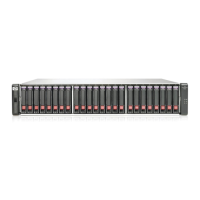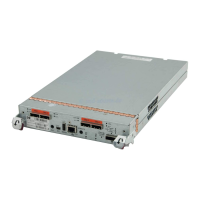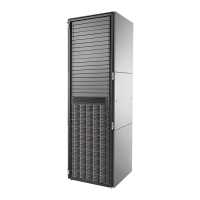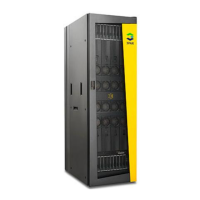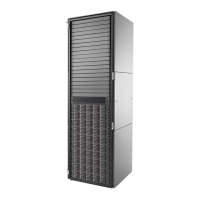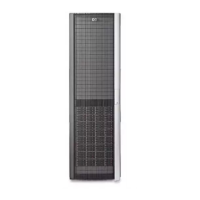HP StorageWorks P2000 G3 MSA System SMU Reference Guide 113
• If a replication was performed, under both the primary volume and the secondary volume a
replication image appears.
• If not already present, the primary volume's snap pool appears.
• Under the secondary vdisk:
• The secondary volume appears.
• Under the secondary volume the primary volume appears.
• If a replication was performed, under both the primary volume and the secondary volume a
replication image appears.
• If not already present, the secondary volume's snap pool appears.
Replicating a snapshot
If the system is licensed to use remote replication, you can replicate an existing, primary snapshot that is
mapped to a host. You can only replicate a snapshot of a volume that is already part of a replication set.
If the selected snapshot hasn't already been replicated to a secondary volume, each replication volume in
the replication set is requested to replicate the snapshot data. Only snapshot preserved data is replicated;
snapshot modified data is not replicated.
To replicate a snapshot
1. In the Configuration View panel, right-click a snapshot and select Provisioning > Replicate Snapshot.
2. In the main panel, optionally change the default replication image name. A name is case sensitive and
cannot already exist in a vdisk. A name cannot include a comma, double quote, or backslash.
3. Click Initiate Replication. In a few seconds, the following changes occur in the Configuration View
panel:
• Under the primary vdisk, under both the primary volume and the secondary volume a replication
image appears.
• Under the secondary vdisk, under both the primary volume and the secondary volume a replication
image appears.
Removing replication from a volume
If the system is licensed to use remote replication and you no longer want to replicate a volume, you can
remove its replication set. When a replication set is removed:
• A rollback is automatically performed to the latest available snapshot on the secondary volume to
ensure that data is consistent.
• Replication volumes associated with the replication set are converted to master volumes.
• Any replication images associated with the replication volumes are converted to standard snapshots.
Snapshots are converted regardless of the number of snapshots allowed by the system's license.
• There is no longer a relationship between the volumes or their snapshots in the two vdisks.
To remove replication from a volume
1. In the Configuration View panel, right-click a primary volume and select Provisioning > Remove
Replication Set.
2. In the main panel, click Remove Replication Set. A message indicates whether the task succeeded or
failed. If it succeeded the following changes occur in the Configuration View panel:
• Under the primary vdisk:
• The primary volume’s designation is changed from Primary Volume to Volume
• The secondary volume is removed
• Any replication images are replaced by snapshots
• Under the secondary vdisk:
• The secondary volume’s designation is changed from Secondary Volume to Volume
• The primary volume is removed
• Any replication images are replaced by snapshots

